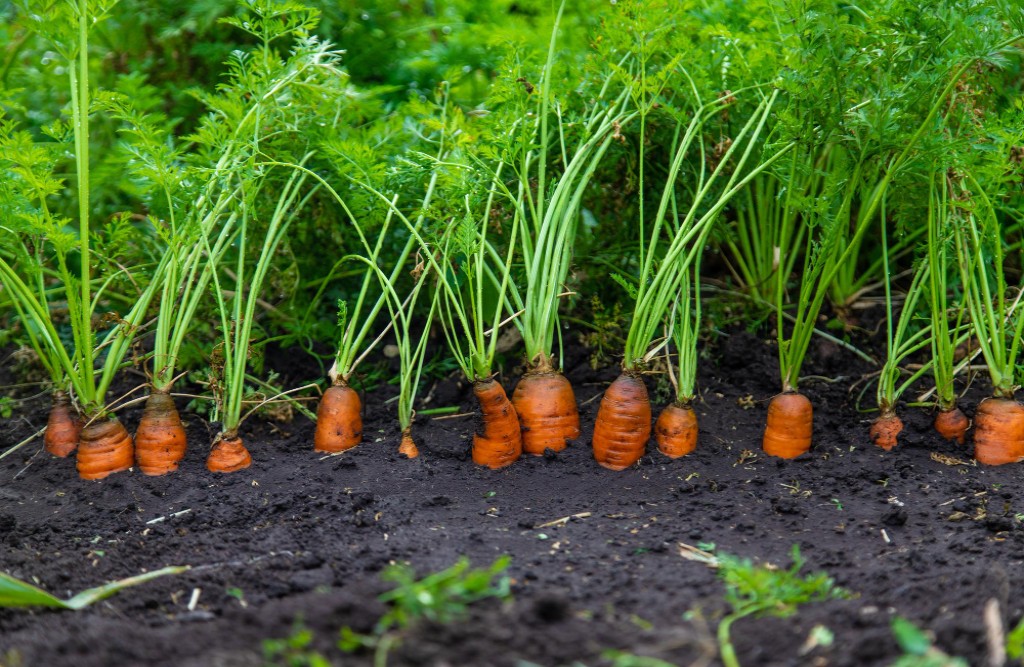
Carrots occupy a significant place among root vegetables and are extensively grown across India. Known for their high Vitamin A content, carrots thrive as a crop in the plains during the winter and colder seasons. The cultivation of carrots proves especially lucrative in the arid regions of western Rajasthan, particularly in and around Jodhpur and irrigated areas, leading to widespread cultivation. Carrots fetch premium prices not just in local markets but also in major cities such as Ahmedabad, Jaipur, Mumbai, Bangalore, etc., thus benefiting the farmers.
Carrots have the versatility to be cultivated in various soil types, but for optimal production, well-drained loamy soil with efficient water drainage is preferred. Nonetheless, sandy loam soil also proves to be highly suitable. In dense clay soil, carrot roots struggle to develop properly, resulting in less vibrant coloration. Thorough plowing of the soil to a depth of approximately 1 foot is essential. Ideally, the pH level should hover around 6.5, slightly acidic. Following the initial plowing using a soil-turning plow, the field should be leveled by passing a cultivator over it 2-3 times. Carrots thrive best in cooler climates.
Begin the first irrigation immediately after sowing seeds, followed by a light irrigation 4-5 days later. Subsequently, irrigation should be carried out at intervals of 10-15 days. The application of cow dung manure or compost at a rate of 75 kilograms per hectare is necessary. Cow dung manure, sulfur, and potash should be applied during soil preparation, while nitrogen should be given 15 and 30 days after sowing.
To ensure the availability of carrots, it is essential to choose advanced varieties capable of withstanding higher temperatures. Varieties such as Pusa Kesari, Pusa Meghali, Pusa Rudhira, Selection 21, Selection 233, Super Red, and other advanced Asian carrot varieties are recommended.
The timing for sowing carrots varies depending on their varieties. The period from mid-August to November is optimal for sowing. Carrots typically hit the market from October to November and continue until around February to March. The quantity of carrot seeds required depends on factors like sowing timing, soil type, seed quality, etc., ranging from 5 to 8 kilograms per hectare. In light saline soil and after forming ridges, the seed quantity increases due to denser sowing. For heavy soil, ridge planting is recommended, whereas for sandy soil, flat beds are preferable. In ridge planting, rows should be spaced 30-40 cm apart with a depth of 1-2 cm. Before sowing, seeds should be soaked in water for 12-24 hours and then dried in the shade to aid in easy and speedy germination.
Read More... Golden Opportunity for Farmers, Good Profits from Makhana cultivation, there will be Bumper Yield
Uses of Carrots: Apart from being used in salads, fresh juice, halwa, and vegetable dishes, fresh carrot roots are also utilized in pickles, preserves, jams, soups, etc. The red color of its roots is due to beta-carotene, which is an excellent antioxidant and is the optimal source of carrots. Carrots are a storehouse of medicinal properties. They aid in maintaining good eyesight and boosting the body's immune system. Moreover, they help in purifying the blood and maintaining the balance of alkalinity and acidity in the body. Carrots are rich in nutrients, including protein, mineral salts, and vitamins in good quantities. Additionally, they are used as fodder for animals, providing green feed along with carrot production.
Yield and Benefits: Carrots are a crop that yields high income with low costs and is ready in a short period. By adopting advanced production techniques, farmer brothers can make their cultivation more profitable. The average yield of carrots is approximately 220 to 225 quintals per hectare, depending on the varieties.
Pest Control: